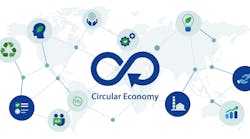LED lighting, powered by photovoltaic systems or other power sources, could potentially have huge benefits for the developing world, and at the same time this project could stimulate a very large market for the emerging LED lighting industry.
At a recent seminar to announce the project to the LED industry, IFC's Russell Sturm said that the motivation to become involved might be either humanistic or profit-driven. "Both these factors are important for the project to be a success," he said.
IFC's "Lighting the Bottom of the Pyramid" project aims to assist companies to sell LED-based lighting systems to the 1.6 billion people around the world that are not connected with the electrical grid. Lacking access to electrical lighting, many of these people and businesses instead rely on fuel-based lighting.
Lanterns that burn kerosene represent the dominant type of fuel-based lighting, but these are very inefficient, produce a very poor quality of light and are also very expensive to run. The annual cost of buying kerosene can easily account for one month's wages in some countries. Where lighting is limited by cost, this can have serious implications; for example, child literacy is affected by restricted study hours, and small businesses are affected if they cannot afford to stay open after dark. To make matters worse, burning kerosene indoors can have health implications.
Evan Mills of Lawrence Berkeley National Laboratory has estimated that fuel-based lighting consumes $38 billion in fuel expenditure, on a global basis. IFC's goal is to help project participants to penetrate this huge and established market. In comparison, electric lighting consumes $185 billion in electricity costs.
The project will focus initially on Kenya and Ghana, since these countries have 15.9 million customers that spend $1.4 billion a year on fuel-based lighting. Sturm says that this is the pilot for what IFC expects to be a global initiative.
Phase 1 of the project is to bring together private sector consortiums of companies that might include off-grid power source suppliers (for example, photovoltaic system suppliers), LED makers, LED product assemblers, local distribution companies in Africa, and other strategic partners.
Phases 2 and 3 of the project, beginning in 2007, will conduct a detailed assessment of customers in two main segments – households and small businesses. For example, it is essential to understand how much customers pay for lighting, what properties they value and how much they would pay for "modern" lighting.
Sturm says that, as part of phase 2 market assessment work, IFC will procure multiple products for field-testing in Ghana and Kenya. "These will help to determine the characteristics of a modern lighting product that responds to the market needs and conditions," he says. "This information will then be shared with the industry to support development of new products for the market."
These phases will also build an understanding of distribution channels, and develop technical standards. IFC's role is that of a "neutral coordinator" supporting all participating companies.
IFC is strongly encouraging all interested companies to participate and to visit the project website at www.ifc.org/led to register their interest.




